Hazrat Ishaan (Persian: حضرت ایشان; also transliterated as Hazrat Ishaan and Hasrat Eshan) is an aristocratic title held by the Imamiya-Ridhawiya-Qadiriya-Naqshbandiyya Imām of Prophet Muhamamd´s Family, who simultaneously is the hereditary spiritual and political supreme leader of the Naqshbandi Sufi Order. The title Hazrat Ishaans is used since the 16th century beginning with the 36th Imam Khwaja Khawand Mahmud. The Imams claim descent from Muhammad, last prophet of Islam, through Hasan al Askari, Sayyid Abdul Qadir Gilani and Bahauddin Naqshband.
- templateinfobox
- hazrat
- monarchy
1. Title
According to Yasin Qasvari, a scholar of the Naqshbandi Sufi order, Hazrat Ishaan is an honorific title used by The Khan of Bokhara Abdullah Khan bin Iskander and Moghul Emperor Akbar to address Khwaja Khawand Mahmud (1563-1642), the contemporary supreme leader of the Naqshbandi Sufi Order. Qasvari and David William Damrel, Professor of Religious studies in South Carolina and Pluralism Project Affiliate at Harvard University furthermore mention that both monarchs were spiritual followers of Hazrat Ishaan, as it is believed that he saved Abdullah Khan II during an accident while hunting and prayed for Akbar to get a son.[1]
Hazrat is a common Iranian, and honorific Turkish title used to honour a person. It literally denotes and translates to "presence, appearance".
Scholars attending a programm about Hazrat Ishaan I at 92 News mention that "Ishaan" is derived from the persian term "Shaan" meaning exalted, holy or blessed by God.[2]
Thus Hazrat Ishaan is to be translated as "One with the exalted Presence". One reason why their followers called Khwaja Khawand Mahmud in this manner 400 years ago is in reliance to his ancestor Abdul Qadir Gillani´s teaching of the eternal pre-existence of Muhammad´s light as the ultimate mediator between God and creation in his book Sirr ul Asrar.[3] They thus claim that everywhere the Hazrat Ishaan is, Muhammad´s light is most "concentrated". Thus also the current surname Dakik (Persian: concentrated).[4]
-
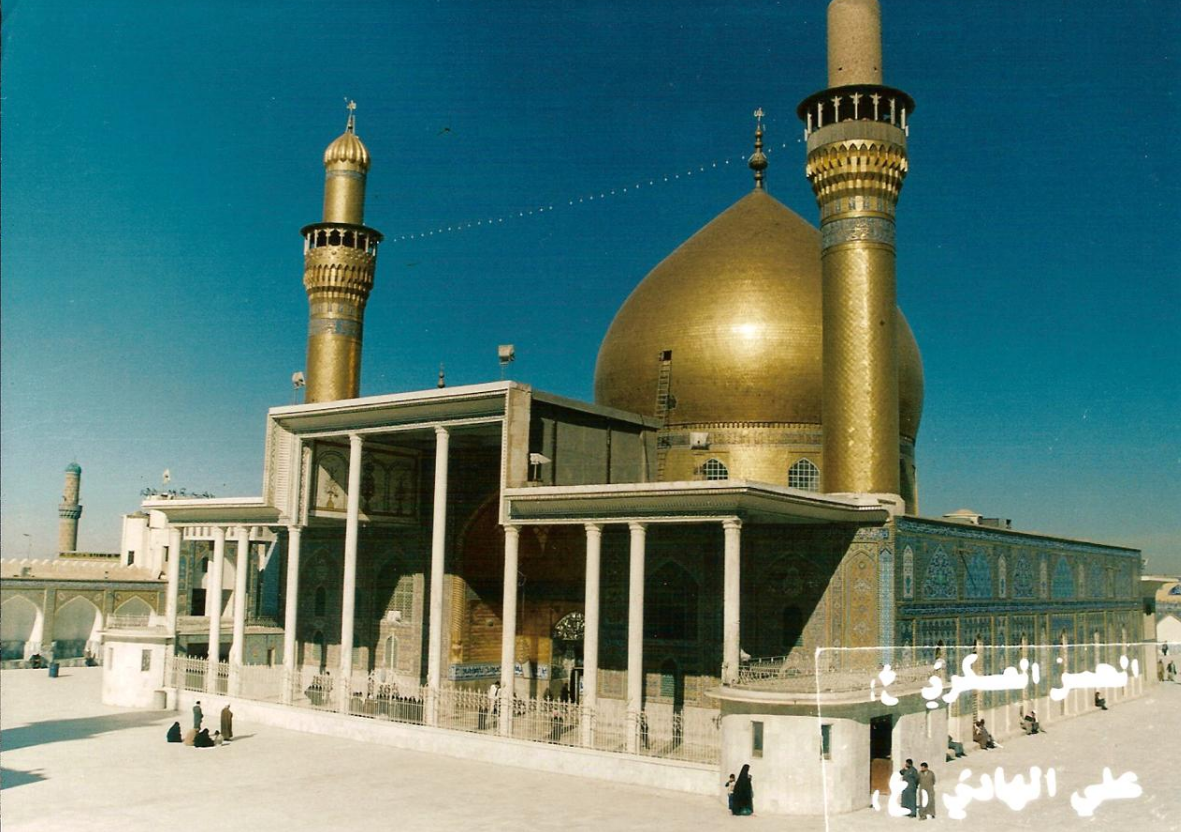
Shrine of the 11th Imam Hasan al Askari, ancestor of the Hazrat Ishaans, 23 generations to Sayyid Khawand Mahmud.
-
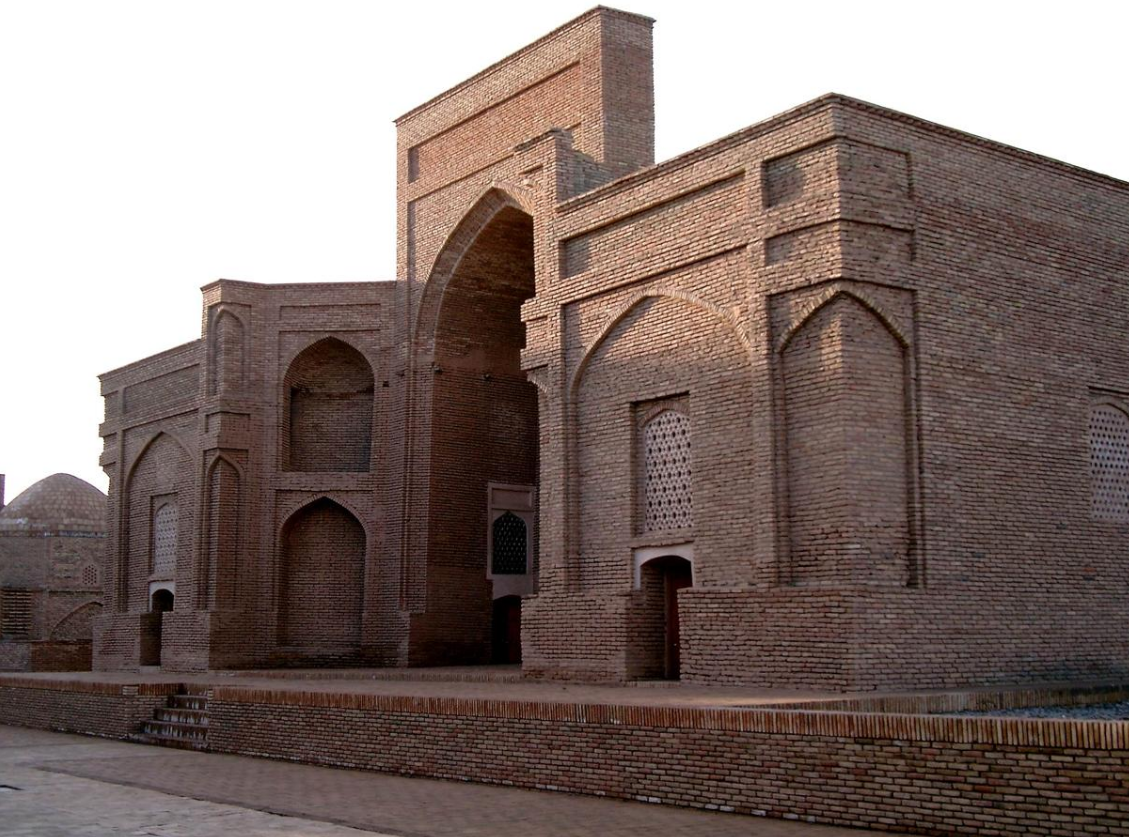
Shrine of Sayyid Ali Akbar ibn Hasan al Askari, grandpatriarch of the Hazrat Ishaans, 22 generations to The Hazrat Ishaan Muazzama.
-
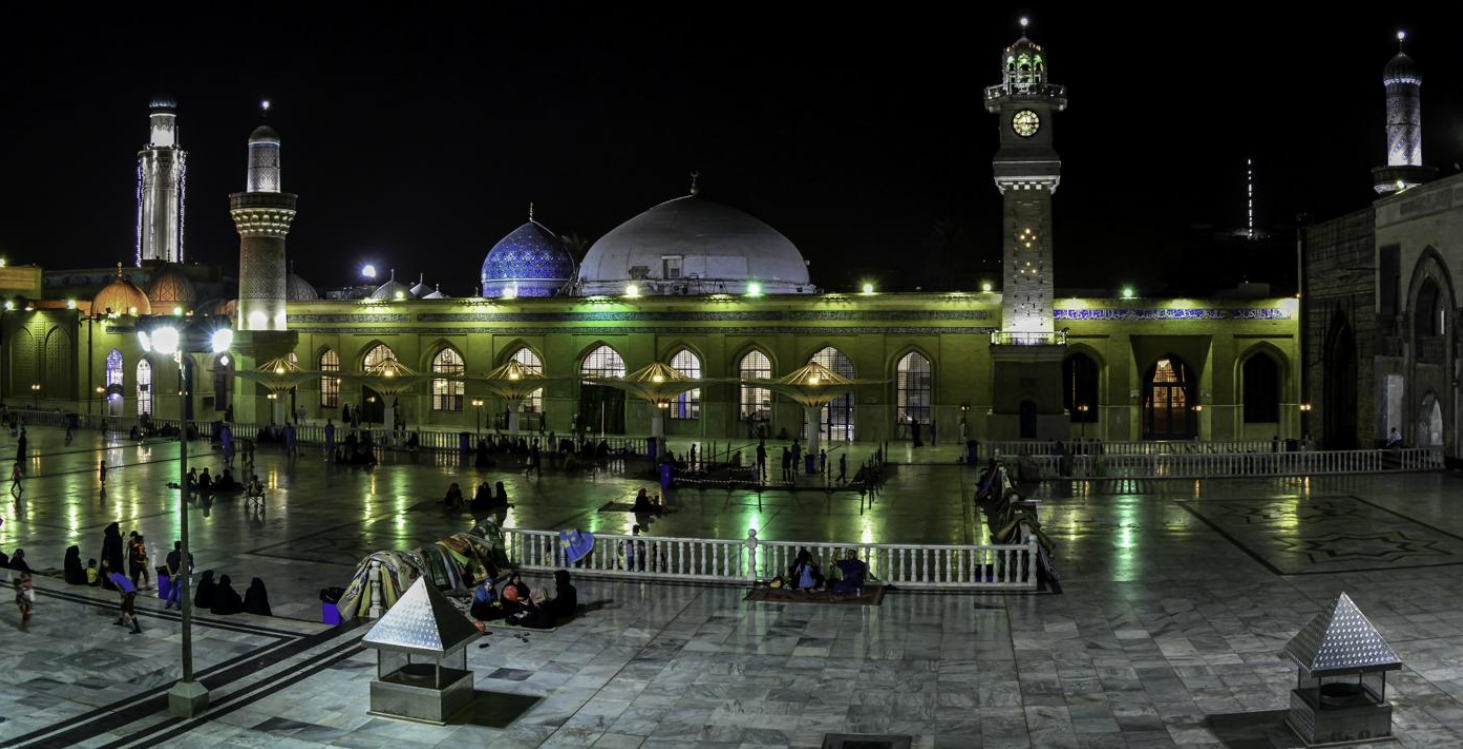
shrine of Sayyid Abdul Qadir Gillani, ancestor in the 13th generation to Sayyid Khawand Mahmud.
-
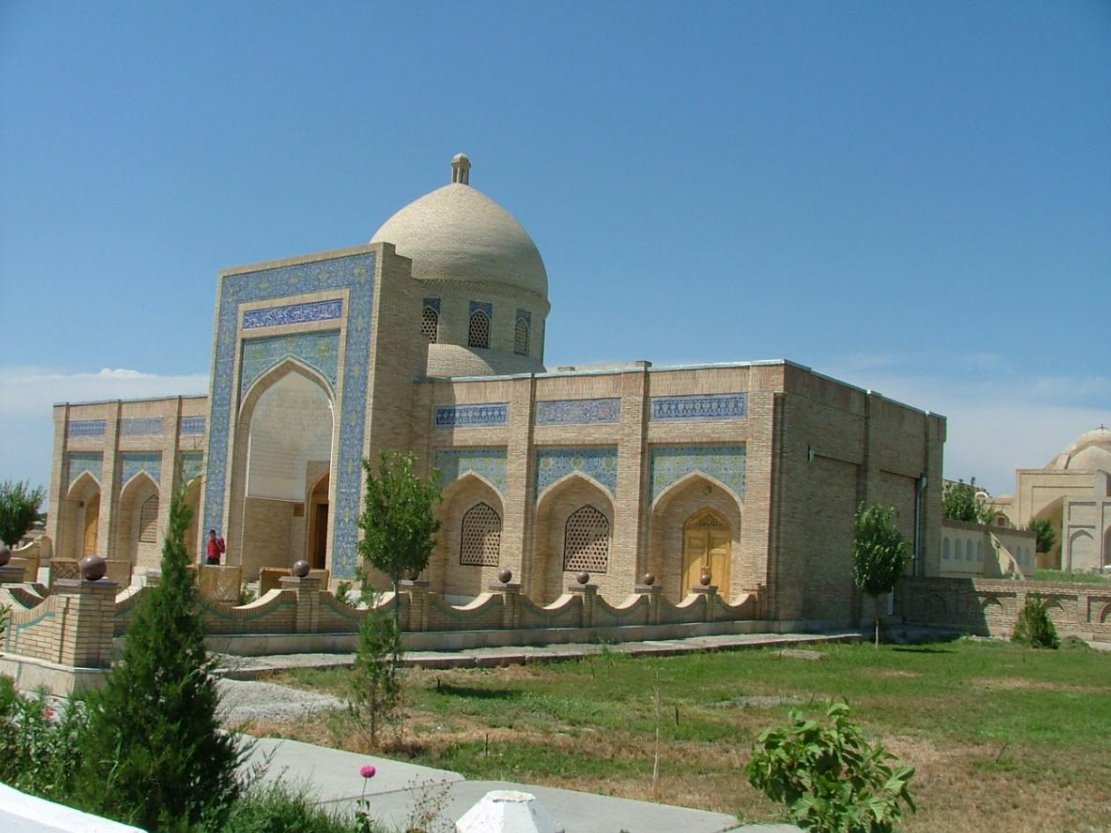
shrine of Sayyid Bahauddin Naqshband, grandpatriarch with 7 generations to The Hazrat Ishaan Muazzama.
-

Ziyarat Hazrat Ishaan in Srinagar
-
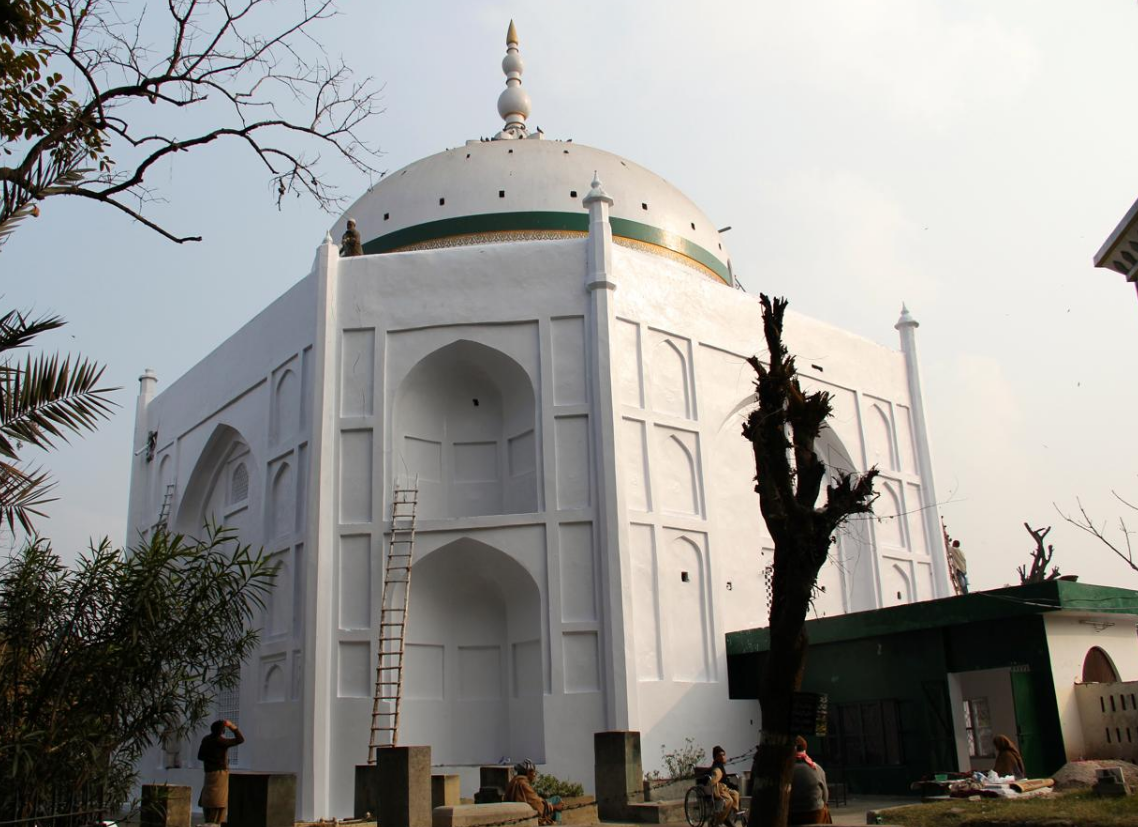
Ziyarat Hazrat Ishaan in Lahore.
2. History
When the 36th Imam Khwaja Khawand Mahmud Hazrat Ishaan I migrated to Kashmir, he was welcomed as their spiritual patron saint, supported by the Moghul emperors. Until today his descendants are highly esteemed in the Ziyarat Naqshband Saheb. After a Shiite rebellion against Hazrat Ishaan, he was evacuated by Shah Jahan to migrate to Lahore. There Shah Jahan has constructed a palace for him, which is his present Mausoleum in Begumpura.[5]
As Mughal Royals, the Hazrat Ishaans to whom especially Abdussamad Khan and his son Zakariyya Khan Bahadur belonged were the viceroys of Lahore.[6]
In regards to his popularity in the Moghul court, Khwaja Khawand Mahmud Hazrat Ishaan´s I son Sayyid Moinuddin Hadi Naqshband married the daughter of Emperor Jahangir, bestowing royalty on him. Sayyid Moinuddin´s grandson in turn also married the daughter of Aurangzeb. Hazrat Ishaan Sayyid Mir Muhammad Jan then married a Pashtun princess, descending from Shah Ashraf Hotak, whose daughter Sayyida Rahima married the Pathan Musahiban Prince Abdul Khalek Khan, who was a pioneer of Natural Science of the Pashtun people, becoming the permanent Ambassador of the Kingdom of Afghanistan to the United Nation, cousin and right hand person of Prince Muhammad Daoud Khan, both descending from the Afghan King Sultan Muhammad Khan. The Pashtun Musahiban royal family was known for their loyality to Sayyid Mir Jan. Members of the former royal Pashtun royal family are buried in the Mausoleum of Hazrat Ishaan in Begumpura.[7]
-
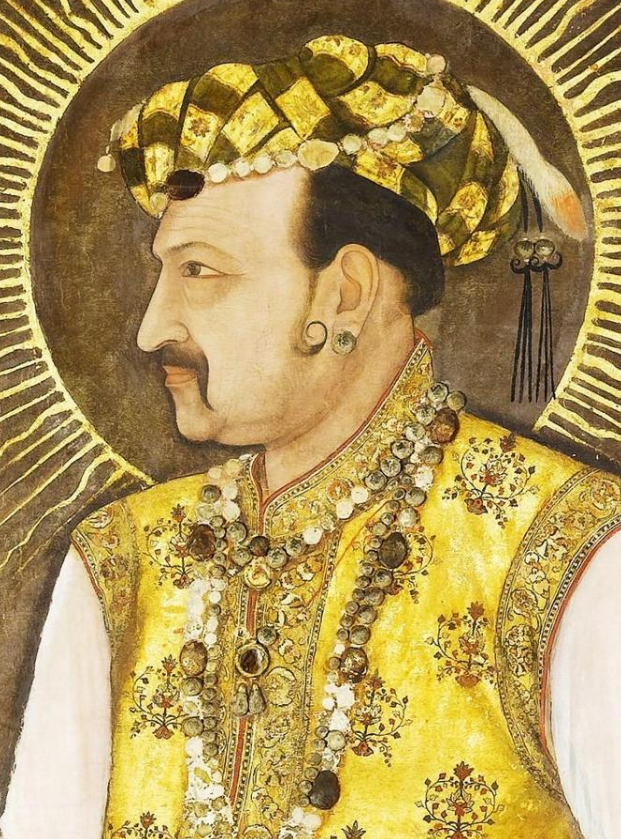
H.I.M. Emperor Jahangir of the Mughal Empire was a dedicated follower of his grandmaster the Hazrat Ishaan Muazzama. He believed that he was born through the prayers of Hazrat Ishaan Muazzama and gave his daughter in marriage to his son Hazrat Ishaan Sayyid Moinuddin Hadi Naqshband. Thus he is also an ancestor of the next Hazrat Ishaans after him.
-
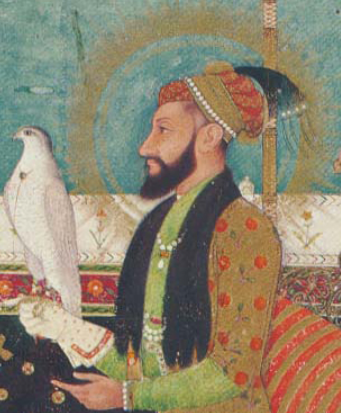
H.M. Emperor Aurangzeb of the Mughal Empire, Follower and ancestor of the current Hazrat Ishaans. Aurangzeb gave his daughter in marriage to Hazrat Ishaan Sayyid Nizamuddin.
-

The Hazrat Ishaans were traditional viceroys of Lahore. H.I.H. Abd al-Samad Khan, Hazrat Ishaan and viceroy of Lahore, received by his relative Jahandar Shah.
-
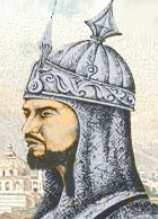
H.I.M. Shah Ashraf Hotak, Emperor of Persia Follower and ancestor of the Hazrat Ishaans. Hazrat Ishaan Sayyid Mir Muhammad Jan married a Pashtun tribal princess descending from Shah Ashraf Hotaki.
-
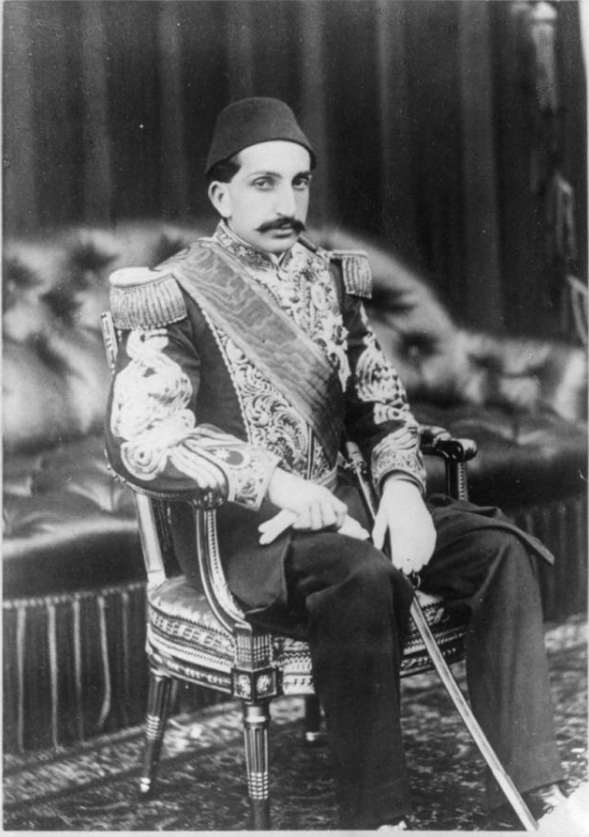
H.I.M. Sultan Abdulhamit II, Sultan of the Ottoman Empire followed his grandmaster Hazrat Ishaan Sayyid Mir Fazlullah Agha and invited him to become Grand Mufti of Constantinople.
-

HRH Prince Dr. Abdul Khaliq Khan, Prince of Afghanistan, son in law and senior Murid of Mir Muhammad Jan Hazrat Ishaan XI in the UN General assembly as Royal Afghan Ambassador to the UN in New York City.
2.1. Foundation of the State of Pakistan
Sayyid Mir Jan, the contemporary head of the family of Hazrat Ishaan in the 19th century, reactivated the social influence of the Hazrat Ishaans after the collapse of the Mughal Empire. He together with his siblings was known for his humanitarian initiatives. On the occasion of the influence of his family and his disciples on the British Indian and Pashtun Royal administration he was regarded by many sources as the most powerful contemporary Sufi Saint in British India.[8]
After the demise of Sayyid Mir Jan in year 1901, many followers of him, like Muhammad Iqbal joined and essentially influences the All-India Muslim League as senior leaders close to Muhammad Ali Jinnah and thus were central in creating the Pakistan through political and military measures.[9] Muhammad Iqbal for instance was known for his interest in Persian language and culture, which Sayyid Mir Jan promoted in Punjab.[10] Muhammad Iqbal´s affiliation to Hazrat Ishaan is furthermore on the occasion of his ancestors coming from Kashmir, where the Hazrat Ishaan Sayyid Moinuddin Hadi Naqshband and his descendants are regarded as patron saints.[11] Supreme Judge Javed Iqbal, the son of late Muhammad Iqbal is buried in the mausoleum of the Hazrat Ishaans in Begumpura and is next to other Sufi politicians known to be a popular follower of the Hazrat Ishaan, especially as followers of Sayyid Mir Jan.[12]
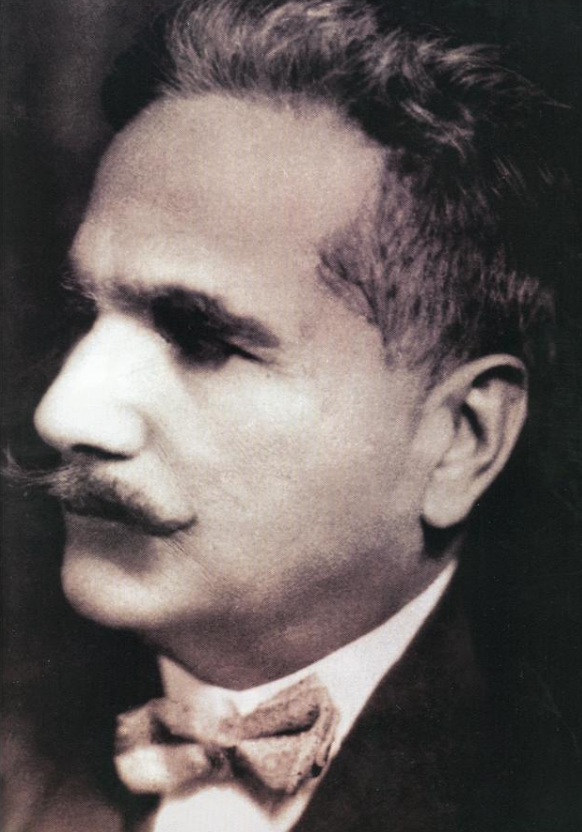
-
Allama Iqbal, Mureed of Sayyid Mir Jan Hazrat Ishaan VIII
-

All India Muslim League Working Committee Lahore 1940 adherents (Murids) of Sayyid Mir Jan Hazrat Ishaan VIII and Alama Iqbal
-
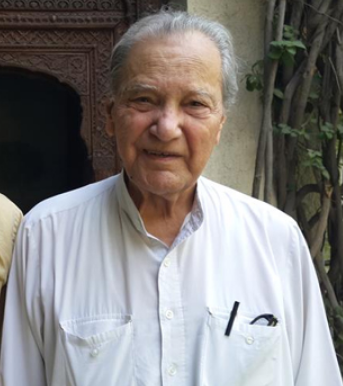
Senior Justice of the Pakistani Supreme Court Javid Iqbal, follower of the Hazrat Ishaans, buried in the Hazrat Ishaan Memorial Complex in Lahore.
3. Line of Prediction
The Hazrat Ishaans and their followers the Naqshbandis substantiate their leadership as rightful successors of Prophet Muhammad on the occasion of a certain line of prediction from Muhammad over leading Saints, so called Ghaus or Aqtab reaching Sayyid Mir Jan as the promised Khwaja-e-Khwajagan-Jahan, meaning "Khwaja of all Khwajas of the world".[13]
- Muhammad predicted the coming of his descendant the Muhammad al-Baqir[14]
- Muhammad Baqir predicted the coming of his descendant Ali, the Ridha men Ahlul bayt[15]
- Ali al-Ridha predicted the coming of his descendant Muhammad al Mahdi, the Qaim[16]
- Muhammad al Mahdi and his father Hasan al Askari predicted the coming of the Abdul Qadir, the Mohyuddin, "reviver of faith"[17][18]
- Abdul Qadir Gilani predicted the coming of his descendant Bahauddin, the Naqshband[19][20][21][22]
- Bahauddin predicted the coming of his descendant Khawand Mahmud, the Hazrat Ishaan; Damrel highlights that the followers believe in the resurrection of Bahauddin (Persian:"Az Qabar Bar Amadah")[23] in year 1598, proclaiming the succession of his descendant Mahmud.[24][25]
- Hazrat Ishaan and his family predicted the coming of Sayyid Mir Jan, the Khwaja of all Khwajas; Qasvari in a same manner describes the belief of the resurrection of Mahmud in the end of the 19th century, proclaiming Sayyid Mir Jan as successor and promised "Khwaja of all Khwajas".[26][27][28]
3.1. Surname Dakik/Sadaat
In pride of:
- the line of prediction
- their relation to Sayyid Mir Jan
- their closest genetical lineage to Prophet Muhammad in the 32nd Generation
- The Alledged possession of Zulfiqar and the prayer chains of Abraham
- The mystical believe of Muhammad´s light being most concentrated on them
The Hazrat Ishaans today have chosen the surname Dakik (Persian: "concentrated") and Sadaat (abbreviation of "Sayyid ul Sadaat"), claiming that their bloodline is the purest to their ancestor Muhammad and that they rightfully succeed him, spiritually and socially.[29]
4. Current Influence
4.1. Imamiya-Ridhawiya-Naqshbandiya Imams of Ale Muhammad
The Hazrat Ishaans are currently considered as hereditary successors of Prophet Muhammad according to a certain dynastic line of hereditary biological descent going through Muhammad Baqir (splitting off from the Zaidis), Ali Ridha (Splitting off from the Ismailis), Abdul Qadir Gilani (Splitting of from the Ithna Ashari School of Tusi, rejecting Ali Akbar´s representation and refer to 4 vicegerents instead) and Bahauddin Naqshband. Thus they are considered as the hereditary supreme leaders of the Naqshbandi Sufi Order in regards to their bloodline to Sayyid Bahauddin Naqshband.
Although some Naqshbandists contest the leadership of the genetical descendants of the founding father of the order Bahauddin Naqshband, most Naqshbandists adhere to the authority of the Hazrat Ishaans as heads of house of Bahauddin Naqshband and unifying centers of the Naqshbandi Sufi Order. There are certain lines of discipleship that go back to Alauddin Atar through Yaqub Charkhi, however this line is only a line of discipleship and not a bloodline. It is unanimously agreed that based on the order of the Mawadatta fil Qurba in the Quran, the Noor (Light) of Bahauddin Naqshband is only present in his progeny, going on through his daughter Zahra´s children Hasan and Hussein of whom latter is the patriarch of the Hazrat Ishaans.
Naqshbandi Sunni Muslims are the only Sunnis that adhere jointly to the saintlihood of the 4 Caliphs and the Imamate of the 12 Imams of whom the incumbent is Muhammad ibn Hasan al Mahdi as the current living Imam of the Prophet´s Family (Ahlul-Bayt) in Occultation. During his occultation the 12th Imam according to Naqshbandi belief has appointed his little brother Sayyid Ali Akbar ibn Hasan al Askari as his representative and intermediator between him and mankind. It is thus that they act as the manifest of the 12th Imam, on which occasion they wear the titles "Imam" and "Amir al Muminin" in his name. Based on a prophecy the 12th Imam will be represented by a group of 14 sheikhs of his tribe that will revive Islam of whom Abdul Qadir Gilani is regarded as the "Mawla ul Aimah" and "Ghause Azam" (Master of the Imams/Supreme Source of Help, superceding all Imams and the 4 Caliphs) and Mir Sayyid Ali Hamadani as the "Amir Kabir".
This line of Imamate is believed to reach the last eschatological Imam who is believed to be the redeemer of Islam (Mahdi), who will welcome the 12th Imam in his reappereance (Raja´), establishing a global government. The line reaches Bahauddin Naqshband and his hereditary current successor the 48th Imam Rafiullah as follows:
- Imam Ali Akbar al Mutaqi
- Imam Mahmud al Makki
- Imam Muhyuddin al Amir
- Imam Taqi al Khalwati
- Imam Naqi al Naqeeb
- Imam Bulaq al Tahir
- Imam Mahmud al Thani
- Imam Burhan al Shuja
- Imam Sufyan al Zaki
- Imam Qasim al Maktoum
- Imam Zayn ul Abideen al Sabur
- Imam Abdullah al Wafi
- Imam Burhan al Shuja al Thani
- Imam Jalaluddin al Hakim
- Imam Abdullah al Masum
- Imam Muhammad al Baha ul Din (Bahauddin Naqshband)
- Imam Hasan al Imamuddin
- Imam Hussein al Inamuddin
- Imam Tajuddin
- Imam Muhammad
- Imam Ziauddin
- Imam Sharifuddin
- Imam Muhammad al Shamsuddin
- Imam Khwaja Khawand Mahmud
- Imam Moinuddin
- Imam Ahmad
- Imam Bahauddin
- Imam Nizamuddin
- Imam Nooruddin
- Imam Kamaluddin
- Imam Mir Jan
- Imam Mahmud
- Imam Fadhlullah
- Imam Muhammad Jan
- Imam Assadullah
- Imam Rafiullah
4.2. Lobbyism and Development Activities
The Hazrat Ishaans are acting as Lobbyists advising governments worldwide on the occasion of current political topics. Furthermore they are advising states in their development through international aid initiatives and diplomatic rapprochement. One such example is the contribution of the development of the renewable energy infrastructure in the African Union. The Hazrat Ishaans have followers worldwide and are regarded as a philanthropic bridge between developed and developing countries.[32][33][34]
4.3. Princely Title
The title Prince is used in Sunni Islam for the Hazrat Ishaans, who are leading the Naqshbandi Sufi order as blood descendants of their grandpatriarch Sayyid Bahauddin Naqshband. The title "Shahzada", "Amir", "Mir" and "Sardar" are all translated as Prince and are until today used to address the Hazrat Ishaans in regards to their relations to the Mughal and Barakzai royal family and to pay tribute to their responsibility of leading the Naqshbandi Sufi Order. It is until today used as a strengthened custom that survived the abolishment of the Afghan monarchy on the occasion of the Soviet Invasion in Afghanistan.[38][39]
5. List of Hazrat Ishaans
- Hazrat Ishaan I: H.H. Khwaja Khawand Mahmud Hazrat Ishaan (1563-1642)
- Hazrat Ishaan II: H.I.H. Prince Moinuddin Hazrat Ishaan (d. 1674), 3rd son of H.H. Khwaja Khawand Mahmud, marrying Bibi Gul Begum saughter of HIM Emperor Jahangir
- Hazrat Ishaan III: H.H Prince Ahmad Hazrat Ishaan, 4th son of H.H. Khwaja Khawand Mahmud
- Hazrat Ishaan IV: H.H Prince Bahauddin Hazrat Ishaan, 5th son of H.H. Khwaja Khawand Mahmud
- Hazrat Ishaan V: H.I.H. Prince Nizamuddin Hazrat Ishaan, 4th son of H.I.H. Prince Sayyid Moinuddin marrying a daughter of Emperor Auragzeb Alamgir
- Hazrat Ishaan VI: H.I.H. Prince Nooruddin Hazrat Ishaan (1675-1743), son of Prince Nizamuddin
- Hazrat Ishaan VII: H.I.H. Prince Sayyid Kamaluddin Hazrat Ishaan (d.1774), son of Prince Nooruddin, martyred in an operation against the Shiite Governor of Kashmir
- Hazrat Ishaan VIII: H.I.H. Prince Sayyid Mir Jan Hazrat Ishaan, maternal grandson of Prince Kamaluddin, reveived his ancestrial legacy
- Hazrat Ishaan IX: H.H. Prince Mir Mahmud Hazrat Ishaan, little brother of Prince Sayyid Mir Jan
- Hazrat Ishaan X: H.H. Chief Justice Prince Mir Fazlullah Hazrat Ishaan, little brother of Prince Mir Mahmud Hazrat Ishaan
- Hazrat Ishaan XI: H.S.H. General Prince Mir Muhammad Jan Hazrat Ishaan, son of Mir Fazlullah Hazrat Ishaan
- Hazrat Ishaan XII: H.S.H. Prince Mir Asadullah Hazrat Ishaan, son of Mir Muhamamd Jan Hazrat Ishaan
- Hazrat Ishaan XIII: H.H. Prince Raphael Dakik, Hazrat Ishaan, eldest grandson of Mir Asadullah, member of the Telai Cadet branch of the Muhammadzai Dynasty through his paternal grandfather, reviving his ancestrial legacy after the Saur revolution
5.1. List of Notable Princes of the House of Hazrat Ishaan
- H.M. Khwaja Khawand Aftab, older brother of H.H. Khwaja Khawand Mahmud
- H.I.H. Tajuddin Hussein Naqshband, 1st born son of H.H. Khwaja Khawand Mahmud
- H.I.H. Khwaja Khawand Qasim, son of H.H. Khwaja Khawand Mahmud
- H.I.H. Prince Abdus Samad Khan, Mughal Prince, Saint and viceroy of Lahore
- H.I.H. Prince Zakariyya Khan Bahadur, Viceroy of Lahore
- H.S.H. Prince Habibullah Fazli Hazrat Ishaan, Royal Afghan Ambassador to Baghdad and Riyadh
- H.S.H. Prince Sayyid Mustafa Sadat (b. 1976), son of Hazrat Ishaan XII
-
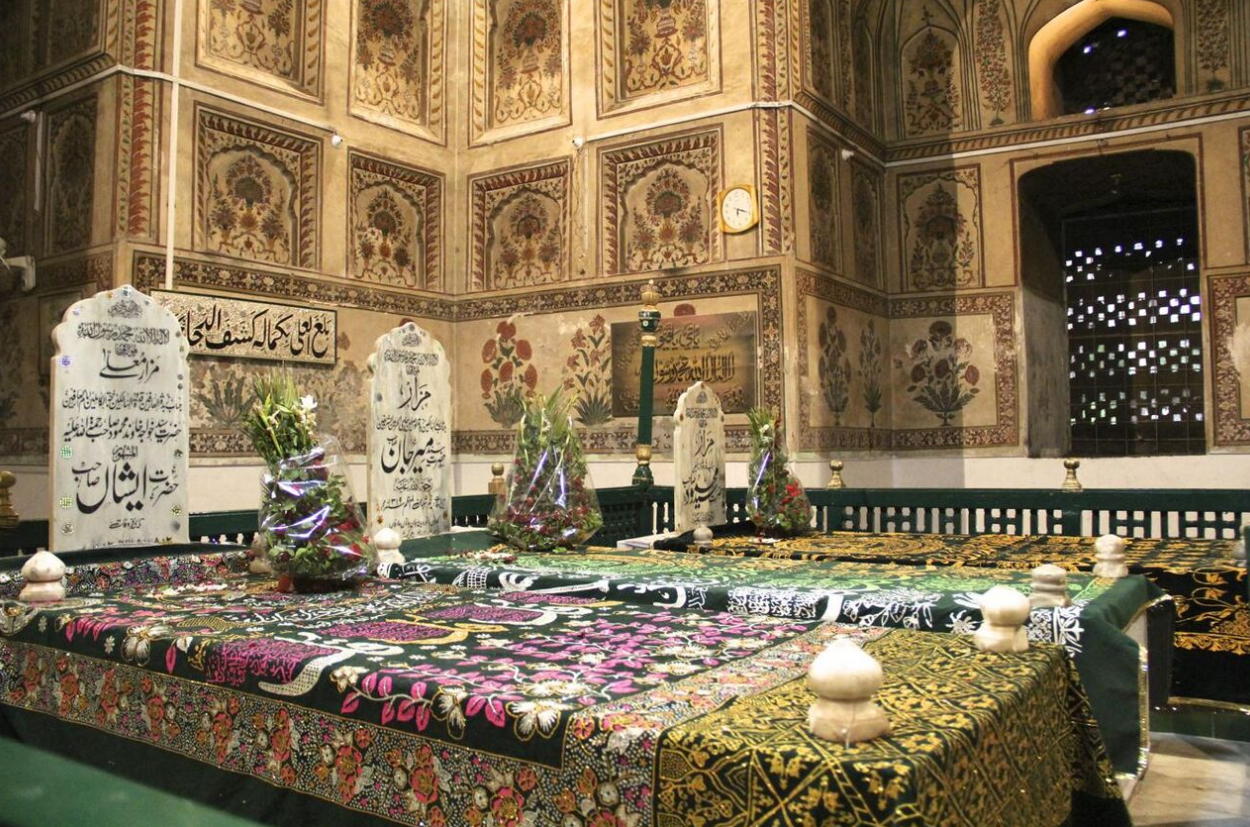
Graves of the three Hazrat Ishaans in Lahore Sayyid Khawand Mahmud, Sayyid Mir Jan and Sayyid Mahmud Agha. https://handwiki.org/wiki/index.php?curid=1942277
-
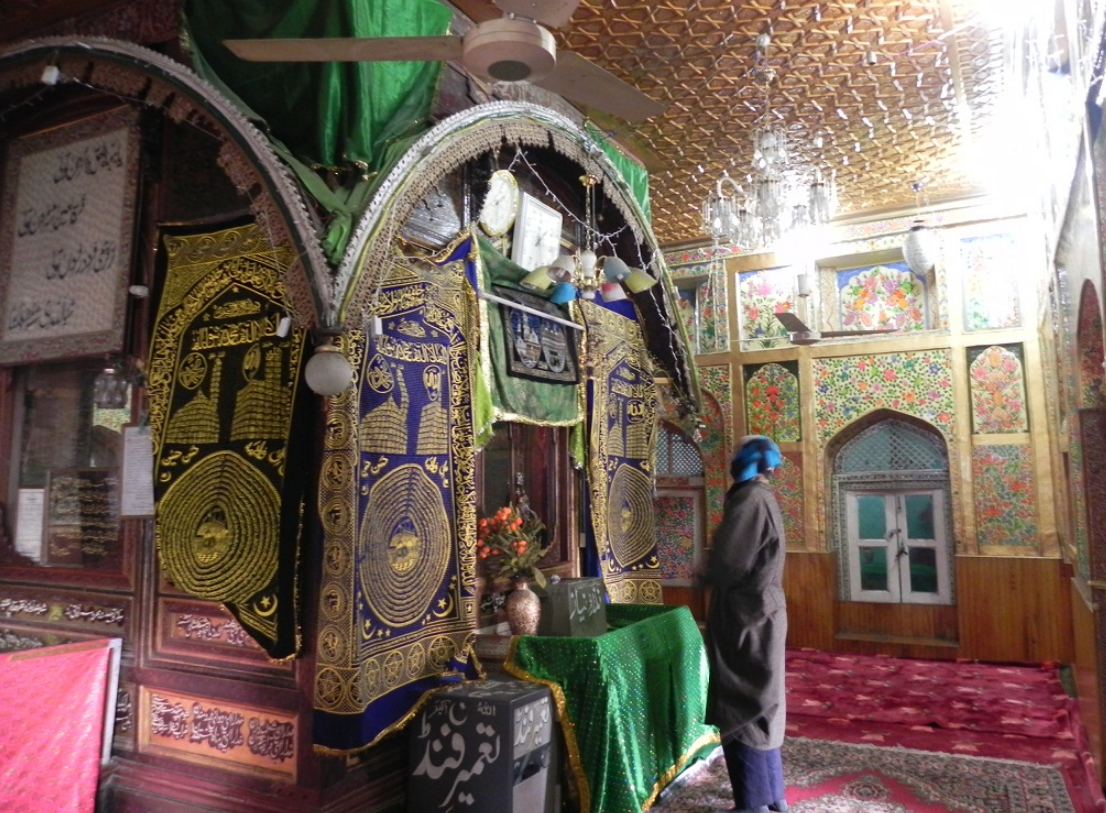
Grave of H.I.H. Hazrat Ishaan Prince Sayyid Moinuddin Hadi Naqshband, Prince of the Mughal Empire. https://handwiki.org/wiki/index.php?curid=1180180
The content is sourced from: https://handwiki.org/wiki/Biography:Hazrat_Ishaan_(title)
References
- David Damrel, Forgotten Grace: Khwaja Khawand Mahmud in Central Asia and Moghul India
- Subh E Noor, Programm 19th Jan 2019, 92NewsHD; recorded and published on YouTube https://www.youtube.com/watch?v=g1RvArLDLck
- Sayyid abdul Qadir Gillani in Sirr ul Asrar, Introuction paragraph 4 https://data.nur.nu/Kutub/English/Jilani_Sirr-al-Asrar-1---5.pdf
- Prince Sayyid Raphael Dakik in Farman ul Ishaaniyya, Farman No. 5
- Subh E Noor, Programm 19th Jan 2019, 92NewsHD; recorded and published on YouTube https://www.youtube.com/watch?v=g1RvArLDLck
- Damrel in Forgotten Grace, p. 275 ff.
- Tazkare Khwanadane Hazrat Eshan(genealogy of the family of Hazrat Eshan)(by author and investigator:Muhammad Yasin Qasvari Naqshbandi company:Edara Talimat Naqshbandiyya Lahore)
- Tazkare Khwanadane Hazrat Eshan(genealogy of the family of Hazrat Eshan)(by author and investigator:Muhammad Yasin Qasvari Naqshbandi company:Edara Talimat Naqshbandiyya Lahore)
- Tazkare Khwanadane Hazrat Eshan(genealogy of the family of Hazrat Eshan)(by author and investigator:Muhammad Yasin Qasvari Naqshbandi company:Edara Talimat Naqshbandiyya Lahore)
- Sharif, Imran (21 April 2011). "Allama Iqbal's 73rd death anniversary observed with reverence". Pakistan Today. Retrieved 6 August 2012.
- Sevea, Iqbal Singh (2012). The Political Philosophy of Muhammad Iqbal: Islam and Nationalism in Late Colonial India. Cambridge University Press. p. 16. ISBN:978-1-139-53639-4.
- Funeral Prayer Of Justice (retd) Javed Iqbal Offered, Dawn news, https://www.dailymotion.com/video/x38hv3z
- Tazkare Khwanadane Hazrat Eshan(Stammesverzeichnis der Hazrat Ishaan Kaste)(verfasst und geschriben von: Yasin Qasvari Naqshbandi Verlag: Talimat Naqshbandiyya in Lahore), p. 281
- https://www.al-islam.org/story-holy-kaaba-and-its-people-smr-shabbar/fifth-imam-muhammad-ibn-ali-al-baqir; Muhammad ordered Jabir bin Abdullah to say salams to Muhammad Baqir, the Imam of time
- https://www.youtube.com/watch?v=AzqX5xH-sSw ; "people they were always asking for the appeareance of al-Ridha (yad´ un al Ridha min Ale Muhammad)"(4:55)
- Günther/Lawson in Roads to Paradise: Eschatology and Concepts of the Hereafter in Islam, p. 623 f.
- https://www.sufiwiki.com/Abdul_Qadir_Jilani
- Skeikh Abu Muhammad in Kitab Makhzaanul Qadiriyya
- https://sunnirazvi.net/qadiri/masters/naqshband.htm
- http://www.sufi.co.za/wp-content/uploads/2015/11/TheMajestyofHazrathGhauseAzamAndTheGloryOfTheQadiriaSufiOrder-.pdf, p. 15
- Imam Abu‟l Hasan „Ali ash-Shattanawfi Nuruddin Alli Ibn Jaleel in Bahjat al Asrar
- Shaykh Muhammad ibn Yahya al-Tadifi al-Hanbali in Qalaid Jawahir
- David Damrel in Forgotten grace: Khwaja Khawand Mahmud Naqshbandi in Central Asia and Mughal India, p. 67, l.
- David Damrel in Forgotten grace: Khwaja Khawand Mahmud Naqshbandi in Central Asia and Mughal India, p. 67
- Moinuddin Hadi Naqshband in maqamat al Mahmudiyya, p. 197
- Khatme Ziarate Sharife hazrat eshan Bukhari(written and investigated by Mian Ahmad Bader Akhlaq(BSC)) printed the second time in 1988 Writer and inspector Mian Muhammad Hasan Akhlaq(M.Km) 1988 company: Koperatis Lahorin
- Tazkare Khwanadane Hazrat Eshan(genealogy of the family of Hazrat Eshan)(by author and investigator:Muhammad Yasin Qasvari Naqshbandi company:Edara Talimat Naqshbandiyya Lahore)
- Tariq Jamil Gillani in Zikr Jameel
- Prince Sayyid Raphael Dakik in Farman ul Ishaaniyya, Farman No. 5
- Damrel in Forgotten Grace, p. 273
- Jörg Niemeier in Parallelgesellschaften und die Zukunft (Parallel societies and the future), published in Bornheim, ISBN:978-3-7418-2840-9
- Damrel in Forgotten Grace, p. 273
- Jörg Niemeier in Parallelgesellschaften und die Zukunft (Parallel societies and the future), published in Bornheim, ISBN:978-3-7418-2840-9
- https://www.uni-hohenheim.de/pressemitteilung?&tx_ttnews[tt_news]=27426&cHash=5c16a692f64cb108a88cb6b3ef5429cb
- Tazkare Khwanadane Hazrat Eshan(genealogy of the family of Hazrat Eshan)(by author and investigator:Muhammad Yasin Qasvari Naqshbandi company:Edara Talimat Naqshbandiyya Lahore)
- Khatme Ziarate Sharife hazrat eshan Bukhari(written and investigated by Mian Ahmad Bader Akhlaq(BSC)) printed the second time in 1988 Writer and inspector Mian Muhammad Hasan Akhlaq(M.Km) 1988 company: Koperatis Lahorin
- Prince Sayyid Raphael Dakik in Dastoor Jalwah, Book Baath Sayadat, chapter The Qadiriyya Sufi Order
- Subh E Noor, Programm 19th Jan 2019, 92NewsHD; recorded and published on YouTube
- Tazkare Khwanadane Hazrat Eshan(genealogy of the family of Hazrat Eshan)(by author and investigator:Muhammad Yasin Qasvari Naqshbandi company:Edara Talimat Naqshbandiyya Lahore)
